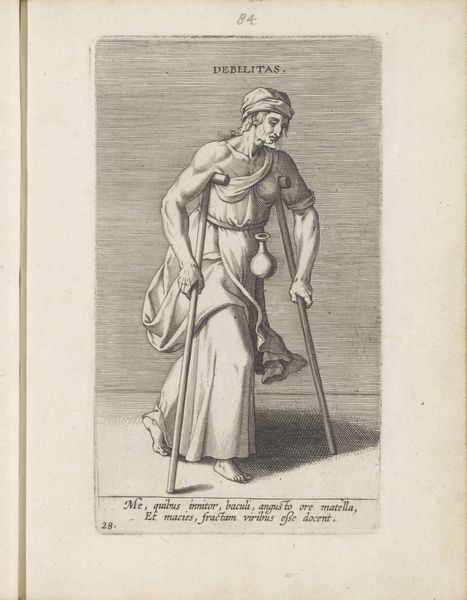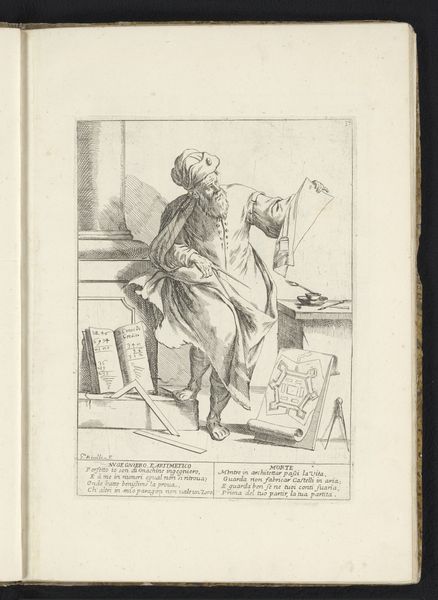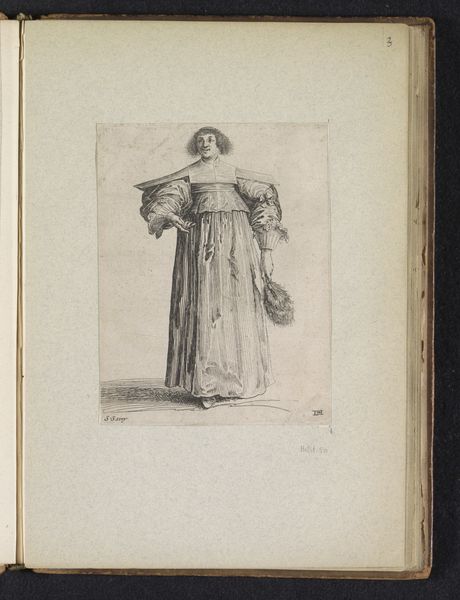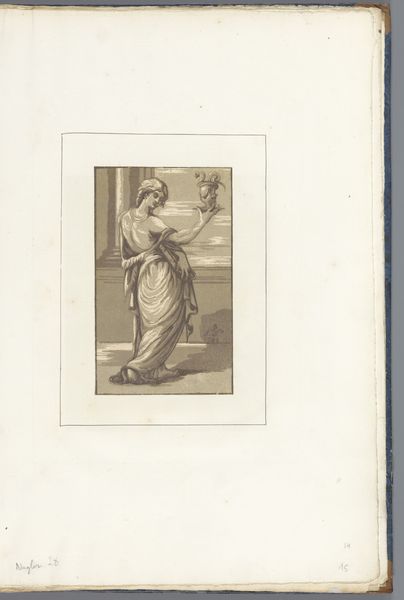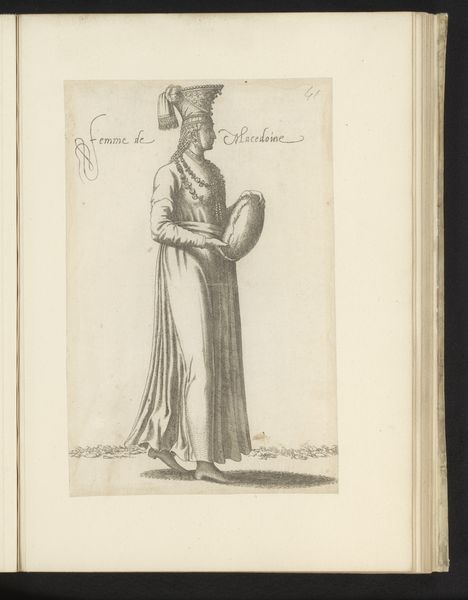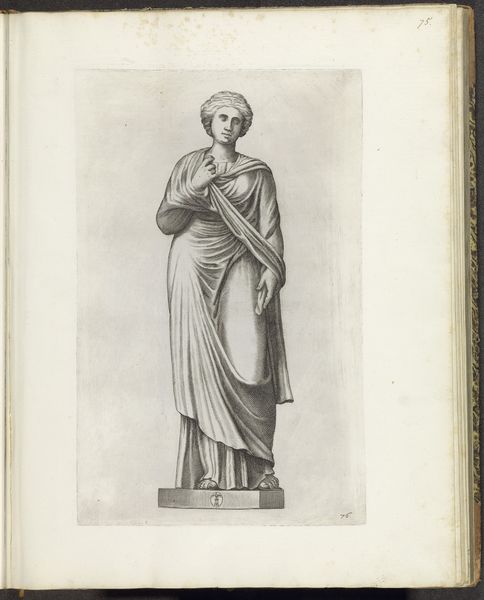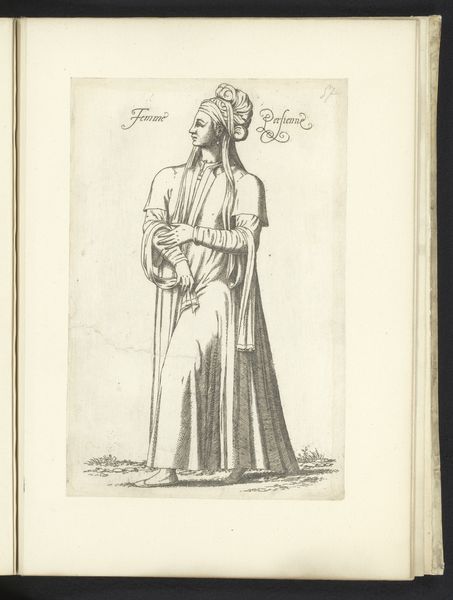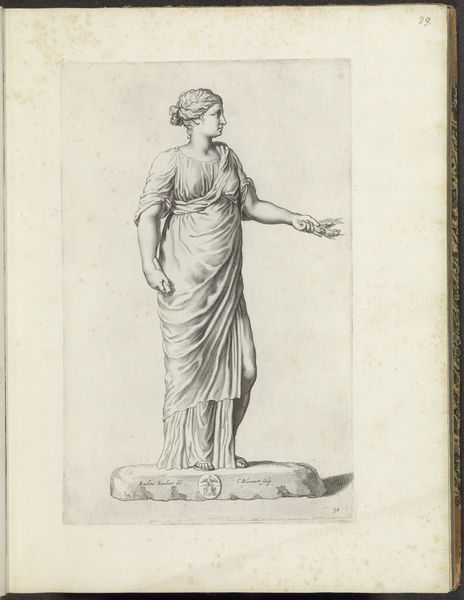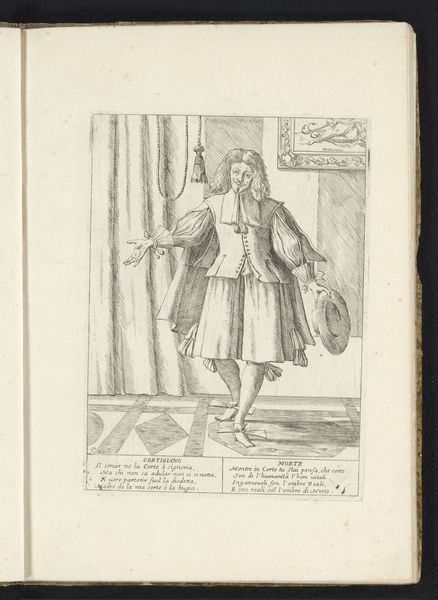
Etudes prises dans le bas Peuple où les Cris de Paris 1737 - 1746
0:00
0:00
drawing, print, etching, engraving
#
drawing
#
baroque
# print
#
etching
#
figuration
#
genre-painting
#
academic-art
#
engraving
Dimensions: Overall: 13 3/4 x 10 3/4 x 13/16 in. (35 x 27.3 x 2 cm)
Copyright: Public Domain
Curator: “Etudes prises dans le bas Peuple où les Cris de Paris,” created between 1737 and 1746 by Edme Bouchardon. It seems we’re looking at an etching or engraving. What strikes you about it initially? Editor: Well, the woman, probably a servant, is very graceful. Despite her humble work with the broom, there’s something noble in the depiction. What can you tell me about this work, especially considering its creation during the Baroque period? Curator: The choice of etching is crucial here. Unlike painting, etching allowed for relatively inexpensive reproduction and wider distribution. Bouchardon is explicitly representing the working class – the “bas Peuple”. We must ask: For whom was this image created, and why? Was it an attempt to ennoble labor or something else? Editor: So, it’s less about aesthetics and more about the accessibility and social commentary? Curator: Precisely! The "Cris de Paris," or street cries of Paris, were a popular subject. By capturing this worker with an etching, Bouchardon participates in circulating images of labor. Notice the figure's tools: The broom is rendered in the same delicate detail as her garments. Does that suggest anything about the way Bouchardon—and, by extension, his intended audience—viewed labor? Editor: It seems like the medium elevates the subject. By making this accessible print, the artist democratizes art and directs our attention to the dignity and value of everyday work. Curator: Exactly. Considering materiality and process shifts the focus. We begin to see how Bouchardon challenges the typical hierarchy of art. Editor: I see now. By thinking about production, consumption, and subject, we gain a different understanding beyond pure aesthetics. Curator: Agreed. Considering the work's materiality encourages us to think critically about social context and class dynamics in 18th-century Paris.
Comments
No comments
Be the first to comment and join the conversation on the ultimate creative platform.
